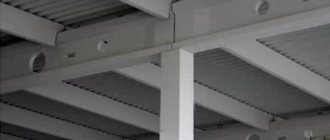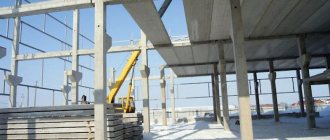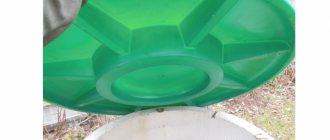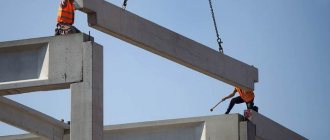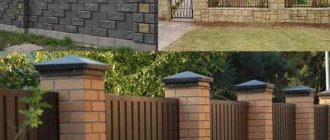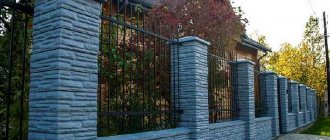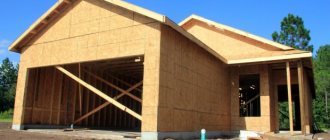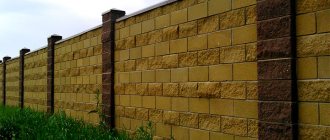- 1 Purpose
- 2 Requirements for floors
- 3 Types
- 4 Materials and tools for manufacturing
- 5 How to calculate parameters?
- 6 Installation of formwork for the ceiling
- 7 Reinforcement
- 8 Filling the floors
- 9 Conclusion
Concrete flooring is a durable and reliable element, which cannot be avoided when constructing multi-storey buildings and structures. Installation of a monolithic ceiling does not require lifting mechanisms, which ensures savings on equipment and additional labor. The use of interfloor partitions in construction reduces work time and allows you to build structures with your own hands. Making concrete floors is an easy process, but in order to make a high-quality material with its main advantages, you should follow the sequence of work and calculate the main parameters of the building element.
Kinds
Scheme of interfloor concrete floors.
The following types of concrete floors are distinguished:
- attics;
- basement;
- interfloor.
Concrete flooring also happens:
- hollow, which is often used in construction where interfloor slabs are required for houses made of concrete, blocks and bricks;
- ribbed, used in the manufacture of roofs for industrial buildings where there is no heating of the premises;
- monolithic, which is a reinforced concrete element and is characterized by increased strength, is used in the construction of buildings and structures with large numbers of floors.
Return to contents
Purpose of tray plates P
The use of tray slabs speeds up the installation of utilities and provides increased protection for pipelines. P tray slabs help Ekaterinburg construction companies solve many important problems:
- ensuring the tightness of pipeline structures;
- maintaining a certain atmosphere inside the channel;
- prevention of heat leaks in heating mains;
- protection from corrosion, from soil pressure, from exposure to water.
We recommend purchasing tray slabs for laying underground and semi-underground channels. Underground ones are laid at a depth of 4–6 meters, above-ground ones rise above the ground by 20–40 cm.
Tray covering slabs can be purchased not only together with trays - they are purchased separately for covering pipelines laid in grooves made of cinder concrete or brick.
Materials and tools for manufacturing
When working with concrete floors with your own hands, prepare the following tools and materials:
- concrete pump;
- dipstick;
- capacity;
- buckets;
- jack;
- building level;
- plywood with moisture resistance property;
- boards;
- steel reinforcement;
- wire;
- concrete mortar or components for making it yourself: sand, water, cement and various additives to increase the strength of the mortar.
Return to contents
Advantages of flooring on the ground
Now let's look at the advantages of ground floor technology compared to floors. Here it is worth immediately making a reservation that we are leaving out all situations when installing floors on the ground is not possible.
- The relative simplicity of the work - installing floors on the ground does not require the use of serious construction equipment. To lay prefabricated floors, you need to rent a truck crane, but this option is not available everywhere. Floors on the ground are well suited for those who build a house on their own, since there are no difficulties in monitoring and accepting compaction work.
- A comprehensive solution - in fact, floors on the ground immediately solve a number of problems: vapor barrier, waterproofing, insulation. The floors themselves do not provide such properties, so insulating measures will need to be taken additionally.
- There is no excess consumption of concrete - the floors rest on the foundation, so that bending forces do not lead to sagging of the slabs; they have to be made stronger and thicker than the floors.
- Using an internal backfill zone - floors on the ground use the area inside the foundation as a support; in the case of floors, the area under the floor is not used as a base.
Backfill can be external or internal. The external one is a cavity between the foundation and the slope of the pit, the internal one is a closed zone of the pit inside the foundation. We wrote about the choice of soil for backfilling in a separate article (Backfilling a foundation with sand or clay).
How to calculate parameters?
Diagram of a monolithic reinforced floor.
When working with concrete floors, it is important to purchase high quality materials. When preparing the building mixture that will be used to fill the structure, concrete grades 250 and 400 are used, which include heavy fillers. To make partitions yourself, it is important to thoroughly calculate the basic parameters of the material. The calculation is based on a comparison of two main properties:
- strength of the reinforcing structure;
- effective load on the slab.
Slab calculations are based on the following indicators:
- intensity of constant loads;
- forces in sections with heavy loads;
- axle rigidity.
The calculation of monolithic floors consists of determining their individual components. First you need to make formwork from thick plywood, then install a reinforcing mesh of steel rods tied with wire. Calculation of partitions is carried out by special computer programs and designers.
The determination of strength is obtained from factors such as: load and strength.
To find out the maximum bending of the slab, use the following data:
- design resistance of reinforcement and concrete;
- A400 C class fittings.
Determining parameters includes the following calculations:
- area of working reinforcement;
- linear load on beams;
- required resistance moment;
- maximum moment in the section of beams.
Formulas and constant values are in the collection of building codes and regulations.
Return to contents
Advantages of flooring on the ground
Now let's look at the advantages of ground floor technology compared to floors. Here it is worth immediately making a reservation that we are leaving out all situations when installing floors on the ground is not possible.
- The relative simplicity of the work - installing floors on the ground does not require the use of serious construction equipment. To lay prefabricated floors, you need to rent a truck crane, but this option is not available everywhere. Floors on the ground are well suited for those who build a house on their own, since there are no difficulties in monitoring and accepting compaction work.
- A comprehensive solution - in fact, floors on the ground immediately solve a number of problems: vapor barrier, waterproofing, insulation. The floors themselves do not provide such properties, so insulating measures will need to be taken additionally.
- There is no excess consumption of concrete - the floors rest on the foundation, so that bending forces do not lead to sagging of the slabs; they have to be made stronger and thicker than the floors.
- Using an internal backfill zone - floors on the ground use the area inside the foundation as a support; in the case of floors, the area under the floor is not used as a base.
Backfill can be external or internal. The external one is a cavity between the foundation and the slope of the pit, the internal one is a closed zone of the pit inside the foundation. We wrote about the choice of soil for backfilling in a separate article (Backfilling a foundation with sand or clay).
Installation of formwork for the ceiling
Floor formwork assembly diagram.
The formwork construction technology involves installing plywood on horizontal supports. To choose the right amount of materials, you need to know the area and volume of the planned floor. The thickness of the structure depends on the possible loads and span dimensions. Thus, the formwork is made to be of increased strength without allowing deformation, so that it can withstand the weight of reinforced concrete for a long time.
When choosing boards for formwork, you should pay attention to their strength and thickness. Before installing the structure, measure the height of the span and the bottom of the floor with a construction laser level. During the installation process, homemade racks are adjusted in length to the height of the structure at which the first layer of the beam will be built.
It is important to maintain a distance that should be more than one cubic meter. Place the racks on the floor with a flat surface and high strength. After that, the cross beams are laid in increments of about half a meter and then the formwork is installed. After installing the formwork, check the top of the structure for horizontalness using a building level.
When using boards instead of a plywood sheet, they are laid next to each other without gaps and a moisture-proof material is laid on top. Along all edges of the formwork, sides are installed, which are fixed at the corners of the structure so that they are not deformed by the mortar.
When installing formwork yourself, it is important to remember a few rules:
- prevent the formation of holes and cracks through which the concrete solution may leak during the pouring process;
- check the strength of the jacks installed under the formwork;
- moisture-resistant plywood is used for the construction of formwork;
- the formwork must be as strong as possible, because the quality of the structure being built depends on it;
- The installation of formwork should be carried out both along the area and along the perimeter of the room, which will protect against leakage of the concrete mixture.
Return to contents
Why is insulation performed?
Before insulating a concrete floor, it is necessary to understand the feasibility of this measure. Concrete has high thermal conductivity. This means that it transmits heat well through itself and removes it from the room. To prevent heat loss, materials with better thermal conductivity are used.
Laying insulation as an additional layer in a private house on the ground floor floor prevents the following problems:
- condensation on a cold surface from the warm air side;
- the appearance of mold, mildew and other microorganisms dangerous to humans;
- violation of the temperature and humidity conditions of the room;
- high heating costs.
If you leave a concrete floor in a private house without insulation, then in addition to the fact that it will be uncomfortable to use, the structure will soon require serious repairs.
Reinforcement
Partitions between floors require reinforcement, which can be started after the formwork is installed. Reinforcement of structures is carried out with reinforcement in one or two layers on the formwork. A reinforcement mesh measuring twenty by twenty centimeters is installed, while the first row is laid on a protective layer, which ensures uniform distribution of the concrete mixture under the reinforcement.
If it is necessary to connect reinforcing elements, an overlap of at least seventy centimeters should be made. To maintain proportion, you should install a second layer on top of the first row of reinforcing mesh with the same pitch (twenty centimeters), only ensuring perpendicularity. At the intersection of the reinforcing bars, they are fixed with steel wire and a special hook designed for connecting the reinforcement. When making a two-layer frame based on segments of reinforcing bars, carry out a similar sequence to the first layer and lay the second, while maintaining a distance between the layers of at least three centimeters.
Return to contents
Using plasterboard or fiberboard
Another option for insulating a concrete floor is to install plasterboard sheets. Below is the sequence of actions.
Stage 1. First, the old floor covering is removed, the bare base is thoroughly cleaned of dirt and dust.
Stage 2. If the surface is uneven, then the protrusions are smoothed and the recesses are filled with putty.
Stage 3. After this, a vapor barrier layer is laid with mandatory access to the walls to the height of the planned insulating layer.
Stage 4. The first layer of thermal insulation material is laid; the thickness of the sheets in this case should be 1.2 cm.
The photo shows laying drywall on a concrete screed
Stage 5. Drywall is treated with adhesive mastic, after which the second layer of material is laid. It is important that the joints of the sheets in layers No. 1 and No. 2 do not coincide.
Stage 6. As soon as the adhesive mastic has dried, the surface is primed and puttied. Then the floor covering is laid.
Note! In order to compensate for moisture/temperature expansion of the material, an edge strip is placed between the ends and the surface of the walls.
Video - The principle of laying drywall on the floor
If fiberboard sheets are used for insulation, the procedure will be even simpler.
Stage 1. The floor covering and baseboards are dismantled.
Stage 2. Sheets of insulation (grade PT-100 or M-20) are nailed to the pre-installed joists.
Stage 3. The fiberboard is covered with a floor covering - roofing felt or carpet. For fixation, it is advisable to use Bustilat glue.
Stage 4. Operation can begin after the glue has dried (usually this takes a maximum of 24 hours).
Covering the floor with fiberboard sheets (self-tapping option for fastening the sheets)
Filling of floors
Pouring a monolithic floor.
After installing the formwork and reinforcement, they begin pouring concrete into the slab structures. During the concreting process, it is important to act quickly, since the solution tends to harden quickly. Concrete is made from cement, sand, crushed stone and water by combining the dry ingredients in a concrete mixer and gradually bringing the mixture with water to the desired consistency. The concreting process involves continuous pouring of the mixture and its compaction with deep vibrators.
Concrete can be laid manually or using a concrete pump. During the concreting process, it is important to monitor the evenness of the laid mixture, for which a laser level is used. Hardening of concrete should be carried out in a place with optimal temperature and moisture, and it is important to protect the solution from direct sunlight and precipitation. Concrete should harden naturally; overheating of the laid mixture will lead to cracking of the solution.
Mechanical impacts on laid slabs are allowed only after the concrete solution has reached its maximum strength characteristics. The laid concrete solution should be periodically sprayed with water, and in order to protect the mixture from the penetration of excess moisture, the poured surface should be covered with waterproofing material. Dismantling of the formwork is carried out after the solution has completely dried.
In order for the floor to have high strength, high-quality materials are used for its manufacture, grade 250 or 400 concrete with heavy fillers, and calculations are carried out that save money and labor.
Return to contents
Work after completion of concreting
Moistening the concrete
After pouring concrete, especially in hot, windy weather, the laid concrete must be immediately covered with damp burlap, matting or a layer of sawdust to avoid cracks. In the future, the concrete must be watered. Since drying and dehydration of newly laid concrete stops the hardening process. In addition, the rapid evaporation of water leads to the formation of rather deep cracks.
Recommendations!
Master Builder
Ask a Question
In dry weather, concrete should be watered for seven days in a row: in the first three days at least every 3 hours and at least once at night; then at least three to four times a day. At temperatures below 5C, watering should not be done. However, in windy weather, concrete is covered immediately after concreting, even at temperatures close to zero. In dry and hot areas, watering is recommended within 10 days. Water for irrigation must be of high quality.
Ready-made concrete and reinforced concrete products: removal of formwork
It is forbidden to walk on freshly laid concrete for 1-2 days, load it or transport goods on it.
Stripping of non-load-bearing formwork elements (side panels of beams) is carried out 48 hours after completion of concrete work. It is recommended to remove the posts supporting the bottom panels only after the concrete has gained strength. That is, 28 days after concreting.
Conclusion
Floors in buildings and structures play an important role in structures, but the desired result can only be achieved through proper manufacturing of the building material and its installation. It is possible to make concrete floors yourself and thereby allow you to independently lay the necessary communications under the structure. To increase the thermal insulation properties of the material, wooden boards are used. Before installing the slab, it should be leveled with self-leveling mixtures.
Compliance with all the rules and technological process for the manufacture and installation of concrete floors will result in a strong, reliable structure for many years.
Economic comparison of options
Before choosing a construction technology, a technical and economic comparison of the options should be carried out; without it, it is impossible to talk about the cost of floors on the ground compared to floors. There are a number of factors to consider when making this comparison.
- The need to replace the soil - if the soil in the internal backfill area is subsiding, then it needs to be replaced. This significantly affects the cost; when replacing large layers of soil, the cost may not be in favor of the floors.
- Transport costs for the delivery of reinforced concrete products in the region - each region has its own conditions in the building materials market. When using ready-made slabs, it is important to consider the costs of delivering products to the site. Losses on logistics and rental of cargo equipment can affect the total costs.
- Cost of materials in a specific region
In fact, you should compare the cost of backfilling and the cost of delivering the slabs. In the absence of problematic soils, floors on the ground are usually cheaper.
Floors on the ground have become widespread in individual housing construction, but this technology raises doubts and criticism among customers. Many people find it more comfortable to realize that at the base of the ground floor there is a reinforced concrete floor, but such a solution is not always successful. Let's consider which base is more rational to choose for the floor of the first floor.
(1)
